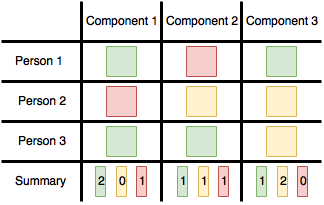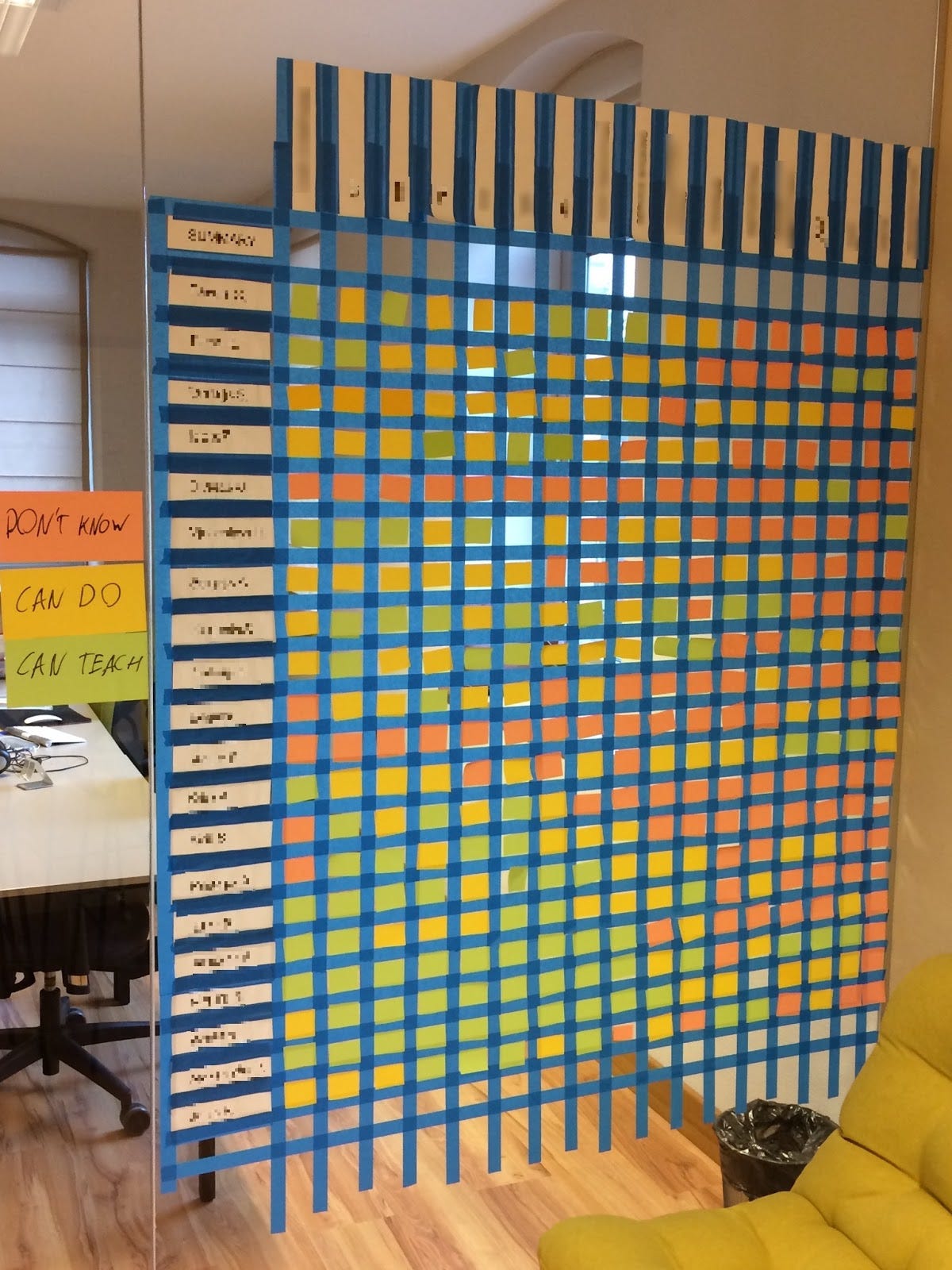“Embrace the unknown! That’s where learning lies! If you’re too afraid to learn, you will never get any better. This is the key to being successful at Scrum: embrace change.”― Jeff Sutherland, The Power of Scrum
Another method how to visualize relevant team data which could help in so-called “Knowledge Tower” problem as well just to identify general team status for continuous improvements.
And also could help with other problems such as:
When multiple teams are working on the same platform it becomes very hard to understand each person’s specialty i.e. features on which developer worked on during a project. There was situation when someone is struggling with a task related to specific functionality, but other team member is expert in that area and could help if only asked, but as usual, there is a silence and task is going over the original estimate.
Another thing, once you start to work in new company, project, group it’s hard to understand who knows that thing and who knows that another thing, so you can approach him/her directly. Not to spend time in communication to find the right person.
100+ messages in chat looking for an answer to a question while it could be just a dialogue between one person who knows something, explaining the other who is asking.
Have you seen similar problems in your team? This could be a time to introduce Skill Matrix.
What is a Scrum team skill matrix?
A skills matrix is a table that clearly and visibly illustrates the skills and competence held by individuals within a team which sums up into team’s overall status. Its primary aim is to help identify gaps where individuals can improve and by doing that improve also team’s status. In result, we should cover areas of the project where are knowledge gaps and it will help us to avoid any disturbance (vacations, sick leaves, change of project, etc.) because there will always be someone to cover.
How we introduced Skill Matrix:
- The frame of a matrix was created listing all team members on one axis and all platform components on the other axis.
- In team’s retrospective there was an activity where each team member filled their row, where sticky note represents level of competence in specific area like Component 1, Component 2, etc. (Green — Can Teach, Yellow — Can Do, Red — Don’t Know)
- Once everybody filled their row, analysis part start. From each row, we can identify status of individual person and from each column, we can identify status of component;
- Team defined their own minimum number of Green — “Can Teach” for component, for example at least 2 people should be able to teach in the component;
- Team identified parts of project where there is lack of knowledge;
- Team Discussed and agreed on actions point how we will achieve our Goal — ‘’at least 2 people should be able to teach in the component.’’
Example of Skill Matrix:
Ways how to transfer knowledge between team members:
1) Challenge yourself, take such tasks where there is a need for an investigation, trying out, asking for advice, etc. This is learning process which will definitely result in knowledge improvements in specific area;
2) Pair-Programming, use as part of knowledge transfer between team members. It’s a great way to collaborate with colleagues and gain plenty of knowledge from each other.
3) Presentation about components, team members who are Green in area could make a presentation about their component in order to diverse knowledge and explain component in more detailed way;
4) Documentation, separate documentation into two sections: developers documentation and user journey documentation, so it’s easier to find specific topic based on a different viewpoint of person.
To sum up
Skill matrix is a great tool for identifying platform knowledge gaps within a team and also serves a purpose of continuous knowledge development.
Once a project is reached a point where you have quite a history together Skill Matrix creation process serves as a great sharing moment for a project team. Looking back on parts of the project where the team used to work together.. It’s good just to realize where we are at the moment and think how we can improve.
However, at the same time, this matrix can be created at the beginning phase of a project and just occasionally checked and improved through full project life cycle.
Our team consists of more than 20 members working on the same project. Therefore, In my opinion, this tool better fit for Scaled Agile approach where multiple teams are working together and knowledge is spread across the team.
We as a team agreed how we will proceed with knowledge development. Our next matrix status check is planned after a month, and yours?
Photo of the real version of a matrix:




Share on: